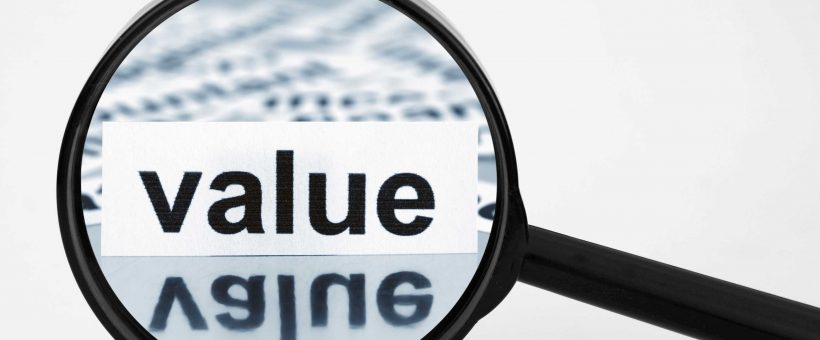Business Valuations
As you know, we work with many business owners who are in the early years of their businesses. Quite often, their growth involves buying a business – or at least some equipment and maybe a book of clients – from a retiring business owner. We’re often asked “How much should I pay for this?”
This is a completely superficial overview of what can be a very technical and detailed topic. There are experts (CBVs, or Chartered Business Valuators), who felt they hadn’t written enough exams once they finished their CPA, so went on to do more. They can tell you much more than me.
But…. here’s a 30,000ft overview. I hope it’s useful.
Let’s start with a bad comparison:
Pricing a business is a bit like buying a house. The price ultimately depends on what two consenting adults can agree on. There’s typically negotiation involved. And the price will no doubt be influenced by what similar properties have sold for in the recent past.
Same when you’re buying a business. But businesses are often more unique than houses. There may not be a valid comparison on hand.
So… the experts have developed some frameworks for how to come up with a price for a business. Which you then use as a starting point.
What do you actually want to buy?
There are two different ways of looking at it. The offer you put on the table will depend on where you’re coming from:
- You’re buying the business because – frankly – you just want the stuff. For example, a contractor is retiring, and happy to sell his equipment. You have no interest on taking on his book of clients or any staff he might have.
- You’re buying the business because you actually want to take over the business. Not just get your hands on the stuff. You want to run a similar business, often with the same clients, with the same staff, from the same location. In fact, you’re going to keep things so much the same that you’re going to put up that sign saying “Under New Management” over the cash desk.
If you’re just buying stuff, agreeing a value is pretty straightforward. It’s the resale value of the stuff you’re buying. You also need to factor in whether or not it comes with any strings attached – for example, if you’re taking over the remaining payments to the finance company. Nothing too tricky.
It’s more complex if you’re buying an ongoing business. If you’re taking it over without interrupting operations, you’re not just buying the equipment. Rather than the seller collecting all the receivables, selling all the inventory and paying outstanding suppliers, you’ll probably agree you’ll collect the receivables, take the cash from selling inventory, and pay the suppliers yourself – and will agree the net cash that you’ll pay the seller for that (or vice versa). You just need to agree what receivables you’ll collect and what will never be collected, and what the inventory’s worth. Again, some math involved, but not inherently difficult. With me so far?
It’s yet more complex if you consider what the jargon calls “intangible assets”. For example, a business may have a book of repeating customer business, know-how, processes that have been worked out and tested, etc. – all things that have been built up and proved over time – but which you can’t go and kick or easily measure. Some of these things (eg. patents) can have a value put on them, and in theory you could also carve them out and buy or sell them separately.
But even once you’ve taken all these things out, the business has value beyond the sum of its parts. This is known as “goodwill”. In simplest terms, it’s exactly what the name says – the good will that employers, customers and suppliers have towards an entity, that give it more value than a brand-new collection of all the same people and stuff, who are coming together for the first time.
So…. how do you measure that?
This is where valuation becomes as much of an art as a science. As many companies have found to their cost (think VW with emissions testing, United Airlines with passenger care), goodwill’s very fragile and easily dented – and takes a long time to restore. Witness the drop in those companies’ share prices after those blunders. Clearly, people thought a lot less of those companies (and their wallets agreed) than they did before. Nothing physical had changed, just people’s view of those companies.
But even without any nasty accidents, how do you measure it? This is where the beancounters come in.
What’s it worth?
Basically, you’re buying a business because you think it’s going to make you money. In other words, you hope that the business will generate cash each year, making it a good investment for you. Without going into all the details, a CBV will look at the expected future cash flows of the business, and distill those down into one number: what those cash flows would be worth if you were to receive them in one lump sum, today. Goodwill represents the difference between this price, and the value of the sum of all of those parts. Damaged goodwill means that people think the business will generate less cash in the future than they thought last week.
In practical terms, you come up with this by coming up with a number for the profit the business will generate in a “normal” year. You normally take the last few years of operation as your baseline, but strip out oddball stuff (eg. insurance claims, lawsuits, one-off client wins). Then, you multiply this by a number, conveniently called “the multiplier”, to come up with a value.
If this sounds very subjective and judgmental, you’re right. So a good CBV will normally give you a range of reasonable value, with a midpoint. That’s where you start haggling.
Oh, and to complicate it further, how you structure the deal (eg. do you buy the shares from the seller, or do you buy the business from the seller’s company) also has a huge impact on the taxes. Which affects your ending money-in-pocket. Throw that into the mix as well. This is why people – hopefully – get help.
Yes, yes, yes. Interesting. I asked for help.
OK, let’s cut to the chase. The above will get you started. But let me offer some practical thoughts. Trust me, I’ve learned these the hard way.
Make it a quick cutover. Often, much of the “goodwill” is tied up in the seller’s relationship with his/her former customers. So buyers often arrange for the seller to hang around, to make sure the relationship can be smoothly handed on. But (a) once it’s no longer his/her baby, the seller may disengage, or (b) it’s often difficult for the seller to let go of what they once controlled. Keep the handover as short as possible. It’s helpful if the seller’s actively prepared the business (and customers) for sale before you buy it. If not, you can use that when negotiating the price.
Don’t overpay. Too often, people pay more than they should. For example, take a business that has “stuff” worth $20,000, and generates cash of $30,000 a year, to the owner who works full-time. You agree to pay $50,000 for this business. But you could just as easily have gotten a job that paid you the same. In other words, you’ve bought yourself a job for $50,000.
To be brutally honest, many owner-manager businesses generate no more cash than a living wage for the owner. In these cases, you shouldn’t pay more for goodwill. The business is worth the value of the physical assets you’re buying, plus maybe a notional amount because you don’t have to go to the trouble of setting it all up yourself. [Footnote: A seller – or business broker, paid on commission, is not likely to point this out to you.]
Don’t pay up front. Sadly, sometimes you’ve been sold a bill-of-goods – for example, the numbers were inaccurate, the assets are in worse condition than you thought, the seller’s actively poisoning your new customers against you, you’re stuck with unexpected tax bills from the old days. It’s a lot harder to renegotiate if you have already handed over the money. Put down a real good-faith deposit – but don’t pay out the full price any quicker than three years. Make sure your lawyer puts what’s called a “price adjustment clause” in the contract.
Pay for advice. Please don’t be foolish on this one. You are the decision-maker. But be prepared to pay for advice from an accountant and a lawyer. The accountant should help you work out how much to pay. The lawyer should help you handle everything else with the deal.
Good luck!





